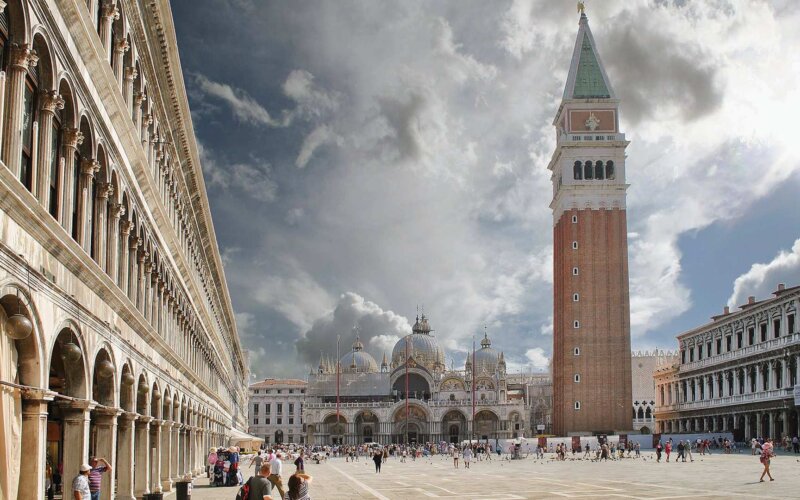Italian Gothic Architecture Period was influenced by Romanesque style. Its development started in the early 12th century (with the later Romanesque period).
Gothic style was used primarily in the construction of churches and cathedrals; the heavy constructions from periods before were changed to stone skeleton with columns, they become bigger than any other building in Europe.
Most churches in Gothic period used the Latin Cross Pan, with expansive areas for the windows and some of them with decorative sculptural designs; in the façade, you’ll notice the difference with other buildings at a glance. They were designed to demonstrate the might of God and what the place represents.
In Italy, gothic Architecture has its own characteristics, mainly in decoration, the use of polychrome, inside and outside buildings, with the use of symmetrical plan and equilibrated proportions.
Two of the most famous example Gothic Architecture in Italy are the Milan Cathedral and the Orvieto Cathedral (Duomo di Orvieto). The Duomo di Milano took almost six centuries to be finished and it is considered as the fourth-highest church in the world.
Fond of Italian Architecture?
Take a Virtual Tour Now!
Immerse yourself in the most significant places in our history.
CHOOSE NOW YOUR FIRST ITALIAN ARCHITECTURE VIRTUAL TOUR
ROME - The Colosseum, Beasts & Gladiatorial GamesROME - Imperial Forum Full Immersion
ROME - Rise and Fall
VENICE - Journey into St. Mark’s Basilica, the Venetian Gem
VENICE - Once-in-a-lifetime Virtual Toure
MILAN - Duomo Cathedral and City Center Tour
FLORENCE - The Heart of Renaissance Florence: Duomo and Baptistery
FLORENCE - Highlights of the Uffizi Gallery
POMPEII - The City Frozen in Time
POMPEII - Discover Pompeii Hidden History with a Local
HERCULANEUM - Ancient Rome
SICILY - The Heart of Palermo
SICILY - Syracuse Virtual Tour
Page Under Revision
This page is under review and updating. Sorry for the inconvenience.
If you don't find the information you were looking for, do not hesitate to contact us. We are more than happy to assist you.



